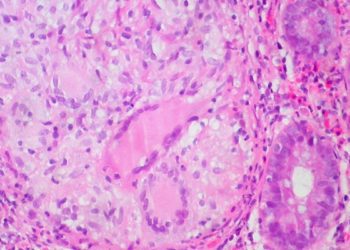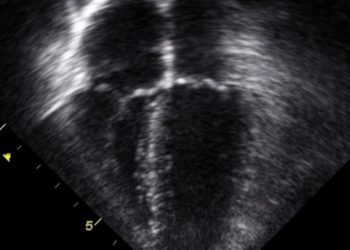Uptake of hepatitis C treatment in people who inject drugs associated with decreased liver disease
1. Hepatitis C patients with undetectable hepatitis C virus (HCV) RNA had reduced liver disease burden compared to those with detectable levels
2. Patients with undetectable HCV RNA also had a significantly reduced risk of death from all causes.
Evidence Rating Level: 2 (Good)
Study Rundown: Hepatitis C is a significant contributor to liver disease burden for people who inject drugs (PWID), associated with high levels of morbidity and mortality. Since the availability of HCV direct-acting antiviral treatments in 2015, levels of viremia in those with hepatitis C infections have decreased. In the present study, patients with undetected HCV had significantly lower liver stiffness measures (LSM) levels than those with detectable HCV RNA, a marker of liver disease severity. Undetectable levels of HCV RNA were also associated with significantly reduced odds of developing liver cirrhosis. Other risk factors associated with higher odds of cirrhosis were baseline age, body mass index, number of comorbidities, and human immunodeficiency virus (HIV) co-infection. Risk of death from all causes was significantly lower in patients with undetectable HCV RNA compared to those who had detectable HCV RNA. A limitation of this study is that HCV treatment uptake might be higher in populations who are more motivated to stay in good health, therefore biasing the study group, which could lead to lowered mortality estimates.
Click to read the study in AIM
Relevant Reading: Restrictions for Medicaid reimbursement of sofosbuvir for the treatment of hepatitis C virus infection in the United States
In-Depth [prospective cohort]: The ALiVE (AIDS Linked to the IntraVenous Experience) study followed a community-recruited cohort of former and current PWID living in or near Baltimore. This study assessed the relationship between HCV treatments accessed by PWID, liver disease burden, and mortality. Of 1,323 participants, the median age was 49 years (Interquartile range, 44 to 54 years). Most of the participants were Black (82%), male (71%), and HIV-negative (66%). Of the total study population, 15% were observed to have an LSM indicating cirrhosis at the baseline study visit (>=12.3 kPa). In the multivariable model, undetectable HCV RNA was associated with reduced average log LSM (95% Confidence interval [CI], -0.181 to -0.115 kPa; p<0.001). Undetectable HCV RNA was also associated with a 72% reduction in the odds of cirrhosis when controlling for other covariates (adjusted odds ratio 0.28; 95% CI, 0.17 to 0.45; p < 0.001). Further, all-cause mortality risk was significantly lower among those who had undetectable HCV RNA than those who did not (adjusted hazard ratio 0.54; 95% CI, 0.38 to 0.77; p < 0.001). The relationship was strengthened when only deaths not related to drugs or trauma were included in the analyses. In summary, the present study supports the community setting treatment of hepatitis C for PWID for reducing cirrhosis and mortality. A further collection of larger sets of population-based data can help inform treatment adherence and success predictors.
Image: PD
©2022 2 Minute Medicine, Inc. All rights reserved. No works may be reproduced without expressed written consent from 2 Minute Medicine, Inc. Inquire about licensing here. No article should be construed as medical advice and is not intended as such by the authors or by 2 Minute Medicine, Inc.







